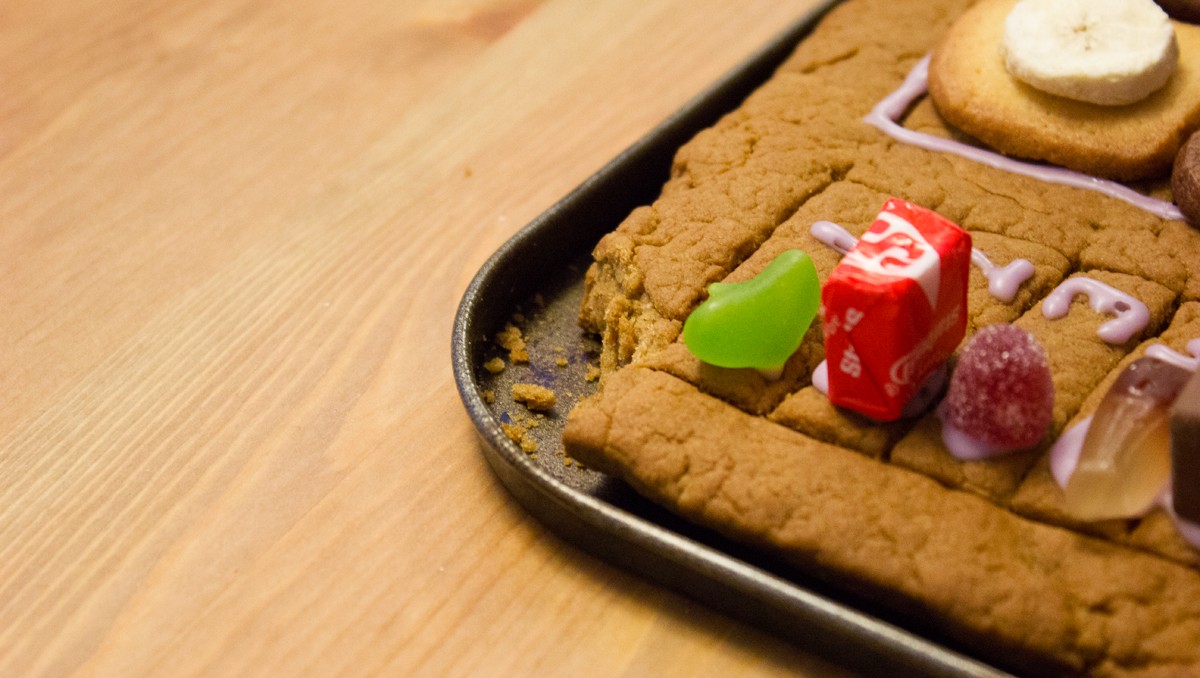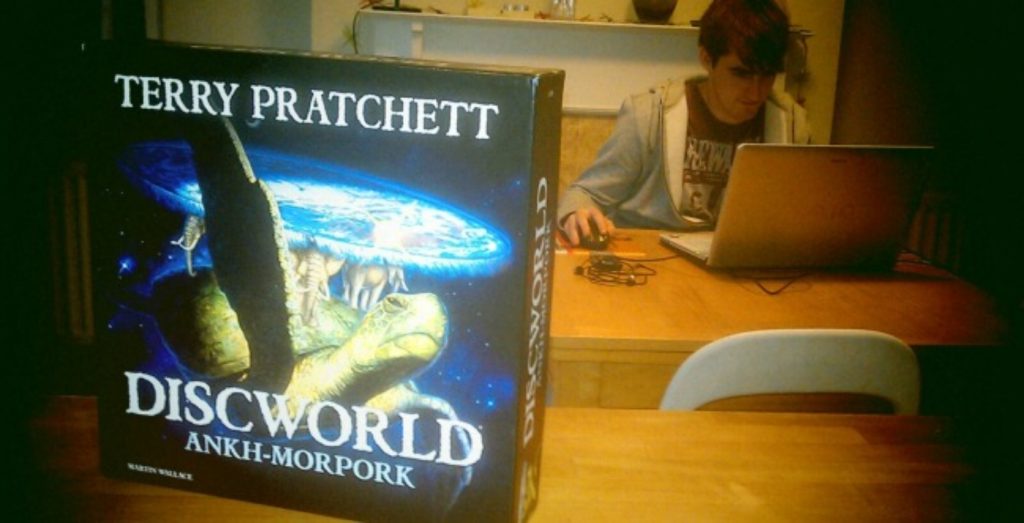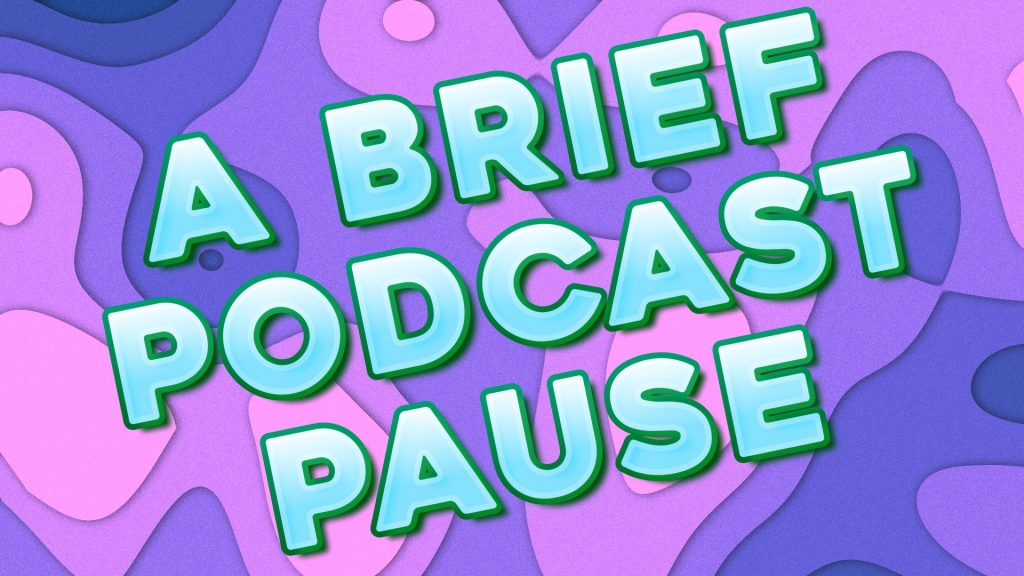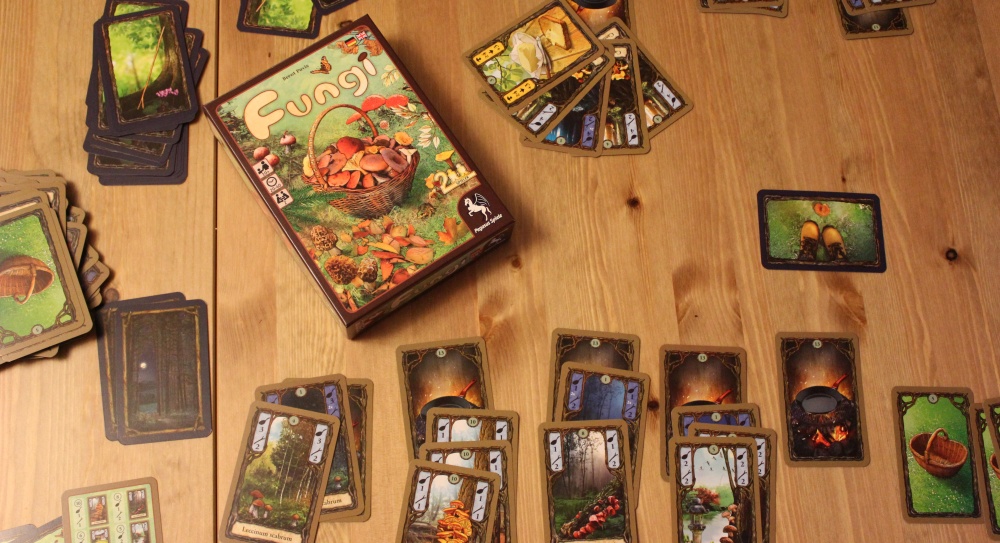Pip: In the time it takes my companion/opponent to move his knight to a new square I have broken off a piece of the game board and stuffed it into my mouth, crumbs on my T-shirt volunteering the specifics of my crime.
On the plus side, I am road testing one of Jenn Sandercock’s edible games – The Order Of The Oven Mitt – and thus I have a mouthful of gingerbread rather than cardboard. On the less plus side you aren’t supposed to eat the board yet and I’ve just remembered I don’t like gingerbread.
The gingerbread debacle happens every year around Christmas. Faced with the dramatic potential of pretending to be a giant devouring a village I will tuck into any number of gingerbread houses and gingerbread folk, trying to ignore my tastebuds. I mention this to make it clear that the gingerbread problem is my own cross to bear rather than anything to do with Jenn. BUT gingerbread is a really useful building material so it’s working really well as the substrate for the game.
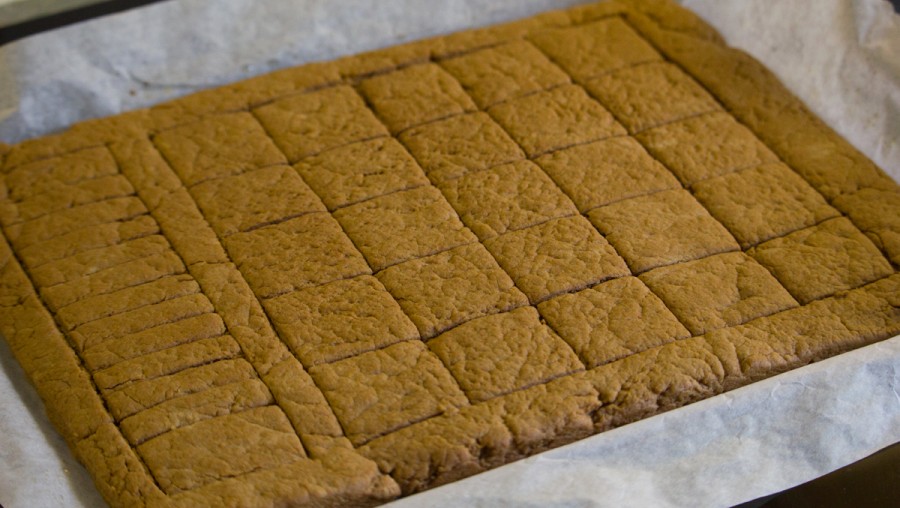
The Order Of The Oven Mitt started life as a Global Game Jam project. You have a gingerbread board with a 5×5 grid carved into the top. On the squares you place light and dark square cookie pieces, each with a treat glued on top using icing.
The more exciting treats sit atop the darker squares. Moving your player piece around the board in L-shapes you try to collect the darker squares, performing little rituals (arm waving, noises, hopping…) as prescribed in detail by the Sacred Order’s helpful pamphlet as you consume the pieces.
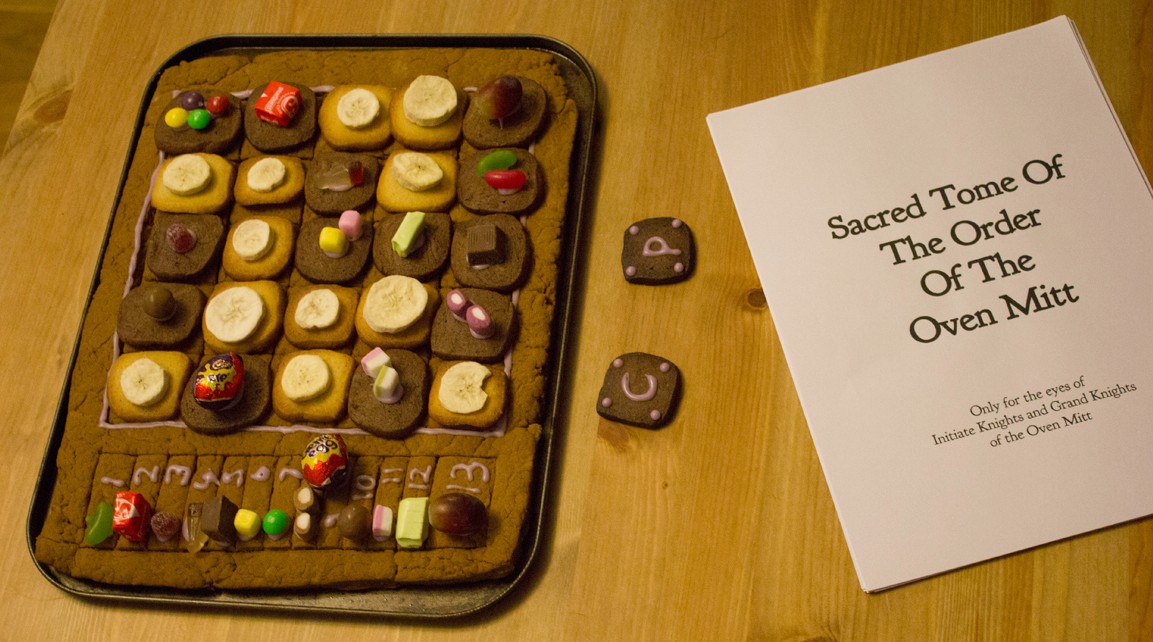
I’m playing the most recent iteration of the game instructions (which Jenn has asked me not to share). She is currently finalising the recipes she wants to include alongside the instructions so in the meantime I have plugged in a gingerbread recipe of my own, which I keep on account of its structural soundness, while the pieces are made from a cookie recipe Jenn sent as a useful placeholder.
The most fun part for me was in translating the sweets in the rituals. Instead of my usual scribbled notes converting cups into grams, the list of treats sees me standing lost in thought in front of the corner shop sweet shelves pondering if there’s a UK version of “candy corn” and realising how few wrapped individual sweets are at my disposal.
(I also refuse to have anything to do with chocolate-covered raisins because they are awful so I’m pretending we don’t have a UK equivalent of them either.)
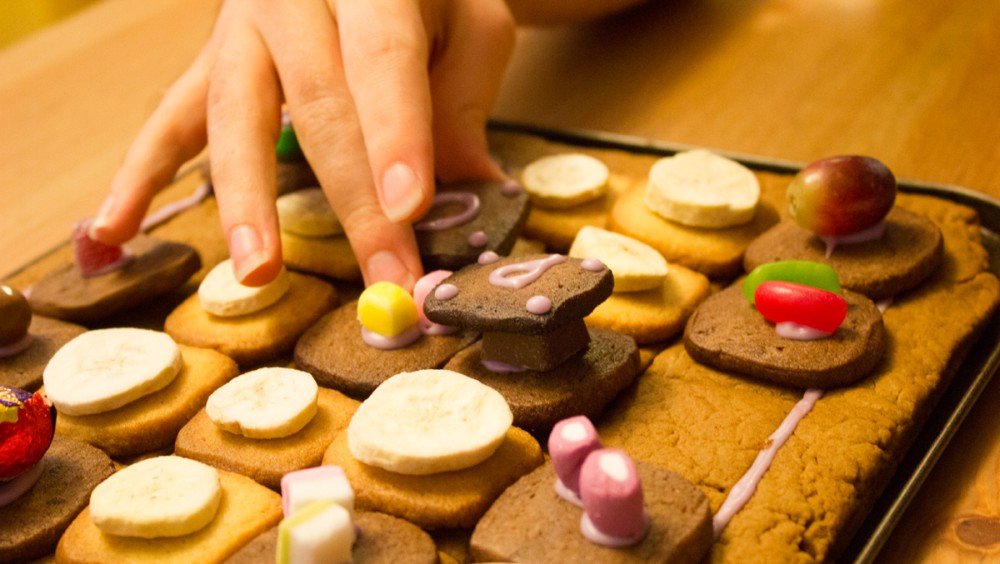
The game itself is DELIGHTFUL. I was wondering whether the rituals would feel naff but they’re joyfully daft. I loved not reading the ritual my opponent activated and just seeing him perform it as a baffling sequence of silly actions. I also felt really smug about having made a board game that looked how it was supposed to from Jenn’s pictures. Less smug when I remember I used our only baking tray as a holder for the game and try to maneuver it onto the kitchen counter so I can make dinner. Our board is now in nine separate chunks of varying sizes and legibility.
Jenn is also a digital game designer – most recently as a coder, designer and producer on the point-and-click, Thimbleweed Park – but her focus now is on putting her edible games on the market in the form of a cookbook (the working title is A Baker’s Dozen Of Edible Games, she tells me). The Order Of The Oven Mitt is perhaps the most board-gamey I’ve seen so far, but another one I loved when I read about it on her website was Master Taster. Essentially you play as a taster trying to juggle different information about the people you need to please, figuring out whether what’s in your mouth fits with the likes and dislikes of your clients.
The thing I really like about Jenn’s approach to edible games is that she wants the fact that she’s using food to be vital to the game, not just as a novelty movement token or a reward which could just as easily be some other trinket. “I’m not always 100% successful in the games I make but I’m trying to make games where they can only be done with food,” she tells me when we Skype.
“With J-Wobbler [a game where you wobble jelly to try to tease a gobstopper towards a desired location] there aren’t too many other things you can make easily that wobble the way jelly wobbles. So what is food good at?”
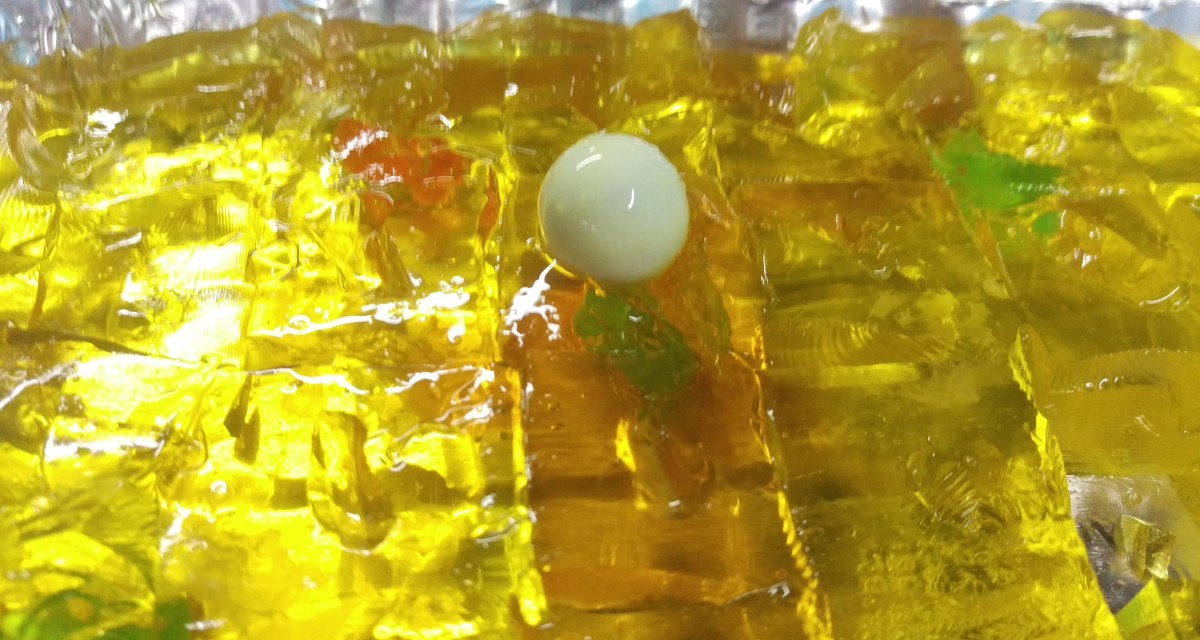
Jelly has its wobble and Master Taster relies on a combination of reasoning and taste, but what else?
“I’ve got a bunch of – I joke that they’re half-baked ideas because they’re literally half-baked! But I’ve got a bunch of ideas I’m trying to work out,” she says. “I’ve got an idea for a game that involves a slab of cookie dough and cookies and you’re competing for territory, I guess. I’m not sure exactly where it’s going – I’ve got a couple of ideas I’ve got to play around with. My next step is probably getting a bunch of cookie dough and attempting to compete with somebody with some cookie cutters and seeing what becomes fun out of that.”
It would be nice if I lived closer to Jenn because I have a number of opinions about cookie dough’s potential. Instead I ask about the playtesting she has been doing and the playstyles people tend to adopt in her games. Mostly the question comes because as soon as I mentioned the project to someone I bumped into at the Game Developer Conference where I met Jenn his first thought was of the possibilities for pranking friends.
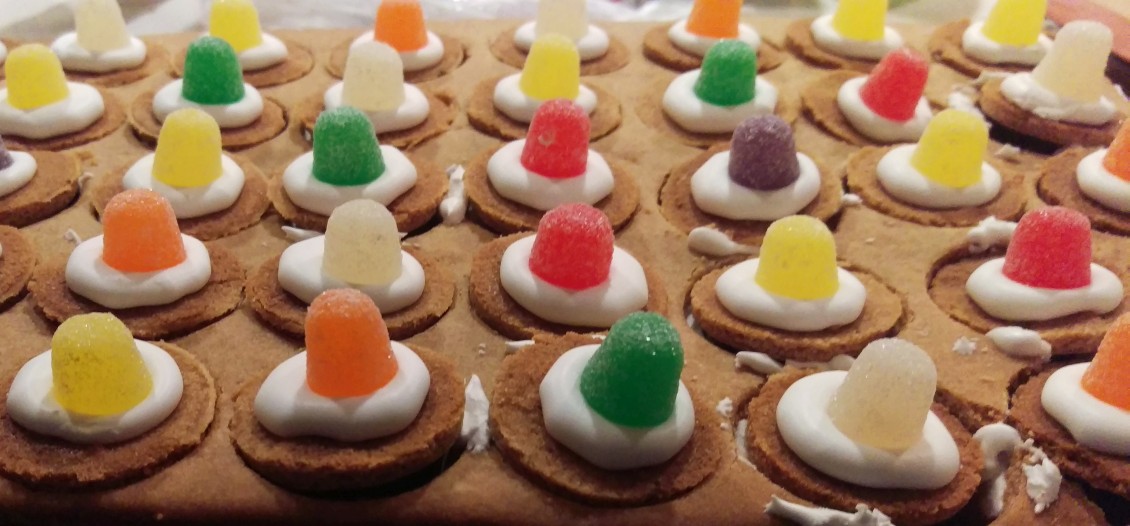
“I have this set of core values in terms of the types of games I like to create: friendship, curiosity and challenge. I know some of the games people are like, ‘Yeah! And imagine if you could do THIS to someone else and…’ It’s either other players being mean to each other or it’s me as a game designer being mean to my players. They’re totally valid games, it’s just not the sort of games I want to create.”
That’s not to say she doesn’t sometimes tease players, though:
“When I was playing Master Taster I went back to Australia and picked up a bunch of Aussie lollies. But there’s a particular Aussie lolly – we call them musk sticks. I don’t know if you get them in the UK at all?”
(We don’t.)
“I never really loved them but I know what they are and people in Australia know what they are but Americans have never had that before. I don’t think they have anything that tastes like that. For the majority of Americans if you give them some musk sticks they want to throw up. It is hilarious to watch! They have no idea! In Master Taster I say the flavour names, so this character doesn’t like musk and everyone’s like… ‘What do you mean?’ I’m like ‘Oh… You’ll know when you taste it!”
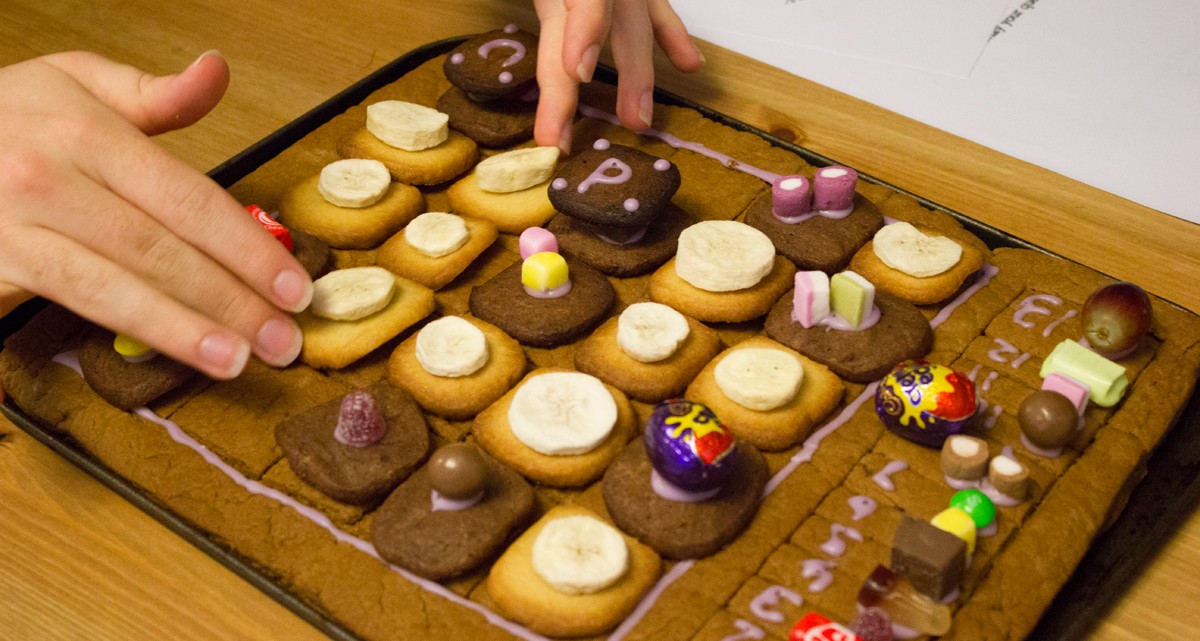
I get the impression that although the games are built around friendly exploration there is usually still a modicum of competition, or at least of being interested in the systems at play. That might say more about the people who have playtested thus far though.
When I played there was this mixture of competition and cooperation. I think my partner and I both wanted to make sure the other person got their fair share so after a couple of more competitive moves early on where one of us would block the other it settled into this friendly collection puzzle where we ended up landing on roughly equal numbers of dark squares.
I was sad not to get the grape but he made sure to nudge me into the path of a miniature Creme Egg, for example. There was also a Malteser in play and there was absolutely no way that that was going anywhere near me so I all but shoved him towards that corner. I cannot stand Maltesers. You know how nails on a chalkboard make people cringe? That’s me and Maltesers. The only reason there was one on this game board at all was for because he LOVES them. The great weirdo.
The other element which was interesting was that I don’t think either of us actually wanted to “win” more squares than that. It amounted to six or seven cookies each, plus sweets, plus icing glue plus a corner of the board plus a certain amount of “testing the dough mixture” in the kitchen beforehand which is the cook’s privilege SHUT UP. That’s a fair bit of dessert and right now I do feel like I’ve attended a really intense children’s birthday party. The sense of fullness is something Jenn actually wants to explore further:
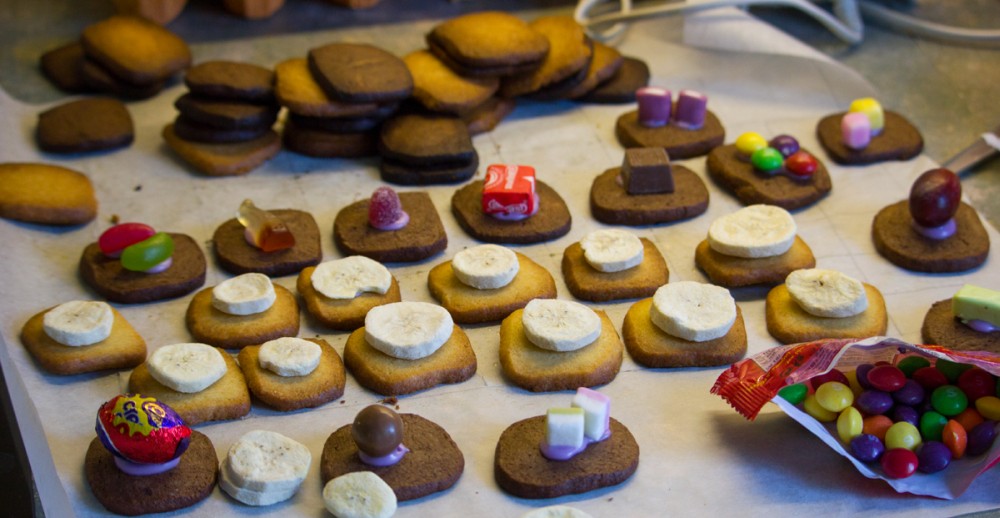
“I don’t know how but I want to do a game that starts when eating is a reward and you’re like, ‘Great! I want to eat as much as possible!’ and then at some point it becomes a punishment just because you’re full. Nothing in the game rules changes but just by the simple fact you’re full it becomes a punishment and you want to try to stop doing it.
“I don’t know how I’ll make that work but I don’t think that kind of switching game mechanics can be done in any other medium. If you’re shooting at stuff and get points for that, getting points is never going to be a negative – or not that I’ve really seen.”
On the more difficult side of edible game design there are issues around allergies or food intolerances as well as the emotional baggage that can come with it for some people. Jenn’s clearly aware of that side of the equation and she took a gluten-free version of The Order Of The Oven Mitt to Indiecade. Some ideas will lend themselves to adaptation better than others so it will likely depend on which elements are intrinsic to the game. With Master Taster it’s easy to imagine just swapping out anything a player might be allergic to, for example.
“Some things you can’t get over,” she acknowledges. “There are some games some people just will not be able to play because I can’t get those ingredients or whatever. It’s somewhat sad that not everybody in the world can play the game but that’s probably true of most games for whatever reason.”
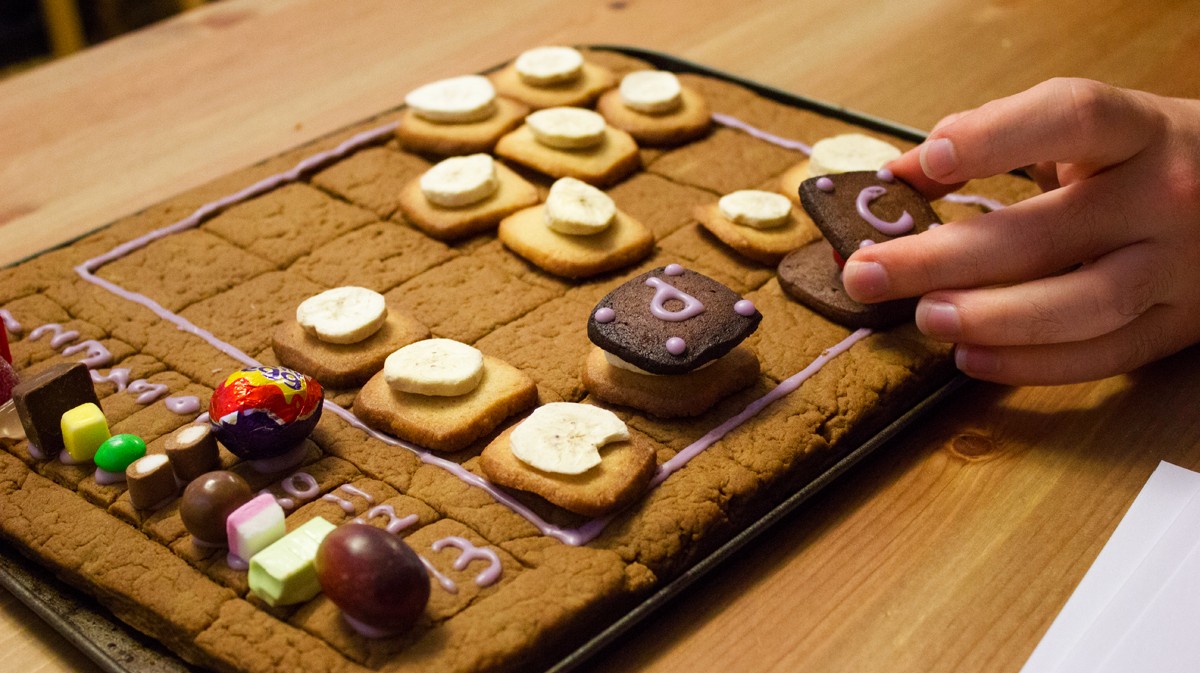
She adds, “In terms of the emotional weight of eating, that’s something I’m very interested in. It’s one of the gameplay mechanics I consider a lot. I know I talk about The Order of the Oven Mitt a lot but it’s the one I’ve seen the most people play. Once I was playing it and the woman who was playing was totally full after eating one piece and you’re supposed to eat at least 6 pieces in general.
“So then instead of being the standard way of playing where you capture the pieces you can eat, she was purposefully trying not to capture them and pushing pieces in the way of the other player. The game still worked – it wasn’t broken, it was just a very different goal.”
Right now, Jenn is still working on her action plan for getting her cookbook onto shelves. Her work on the just-released point-and-click videogame, Thimbleweed Park, has taken the majority of her time and attention which meant edible games taking a back seat for a little while, but Thimbleweed Park was a crowdfunded project so her development work also meant she has a closer understanding of the demands and benefits of a crowdfunded approach as opposed to a traditional publishing approach.
There’s more individual contact with people if you go the crowdfunding route, for example, so you need to factor in the time and energy for that. But you might also get more freedom. If the project does really well it might be enough to let you focus full-time on your goal rather than needing to take on other paid gigs. Or it might be that your crowdfunding audience is happy to pledge money towards the project itself but factoring in a salary or the cost of living is a tougher sell.
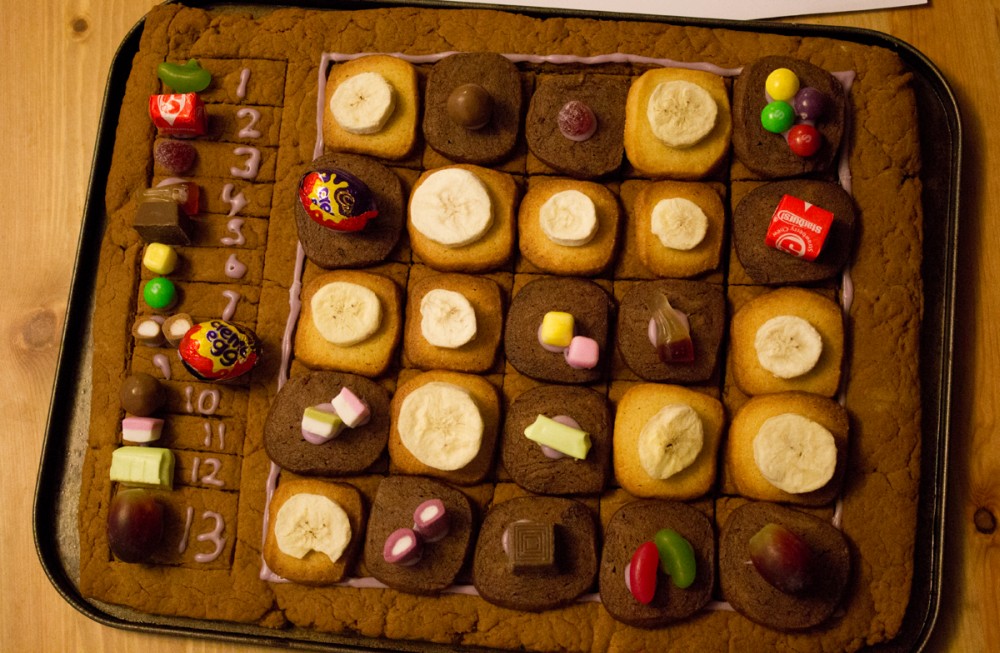
The most recent update on progress actually came via a newsletter from Jenn which arrived in the window of time between interviewing her and having the time and ingredients to attempt joining The Order Of The Oven Mitt. One of the big bits of info for me is that she’s going to include savoury as well as sweet recipes. Savoury was more of a challenge, she’d said, because it often involved smaller windows of time in which the food was viable (I’m thinking of the way carrot sticks can go floppy or chalky in a short space of time whereas the gingerbread heap on my kitchen counter will probably outlast us ALL.)
“There’s still a lot that needs to happen before it becomes a real physical book, but the good news is that work has begun!” she writes, excitedly. “First steps are: looking at other cookbooks for inspirations, drawing up a timeline & budget, looking at funding/delivery/publishing options, locking in awesome people to work with, creating sample chapters, and more!”
If you’d like to be kept updated with Jenn’s Edible Games, a newsletter signup is available on her site.

